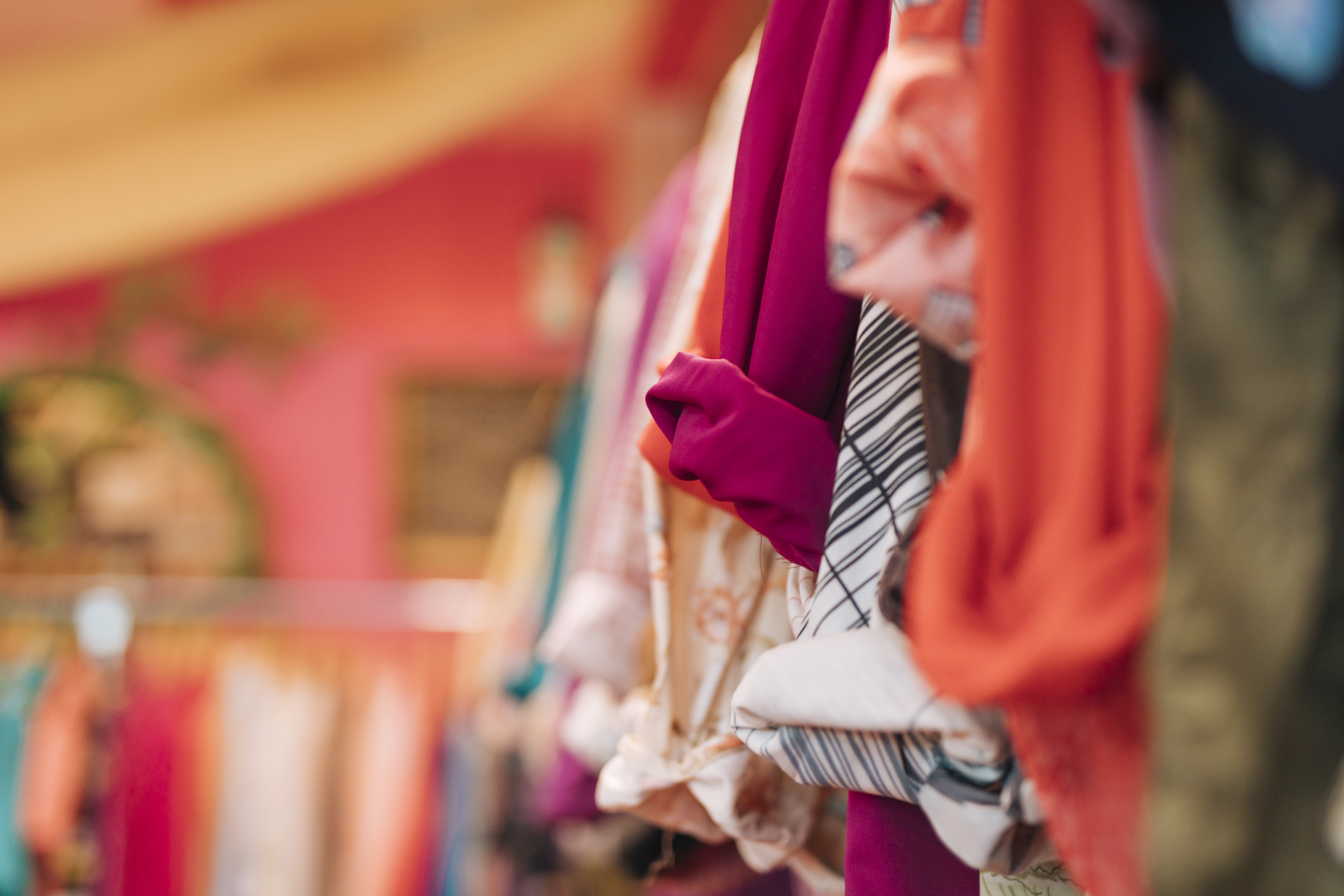Text by Anna Demont
“The fashion industry is considered the second most polluting industry in the world and its impact should be questioned in the context of unprecedented global warming. Each year, 1.2 billion tonnes of greenhouse gases are emitted by the clothing industry or about 2% of global greenhouse gas emissions, and it is the third-largest water-intensive sector in the world. Since the 1990s, fast fashion has rapidly grown throughout the world and the number of collections produced by the brands has skyrocketed., leading to terrible working conditions and unprecedented natural resource exploitation. As a consequence, one may wonder if the fashion industry can be reconciled with environmental protection.
To begin with, all the stages of clothes production are associated with pollution of the environment and harmful effects for the workers: be that production of raw materials, manufacturing of the clothes or transportation”
For instance, 70% of synthetic fibres produced in the world comes from oil. Most of the time, those materials are imported from developing countries, under the aegis of large multinationals such as the Monsanto Group. Those groups often own large amounts of land and can use pesticides as at their convenience. As a consequence, in countries such as India, we can observe an increase in soil pollution and a lot of diseases and malformations caused by pesticides and fertilizers. Then comes the actual manufacturing of clothes, characterized by the use of hazardous chemical products in countries such as Mexico, China and Indonesia. These products are used in multiple steps of the production process such as in the dyeing or the sandblasting of jeans, and are often extremely toxic to the workers and known to increase the risk of cancer or disrupt hormonal systems. In 2011, Greenpeace launched the “Detox My Fashion Campaign” to denounce the use of those products and to challenge 80 companies to reevaluate their responsibility and change their manufacturing processes. Finally, the transport of materials and clothes is extremely polluting due to the emission of greenhouse gases produced by cargo ships or aircraft. It is estimated that the raw materials required can travel up to 65000 km from extraction to usage in the production of clothes.
However, the making of clothes is only the first step in a giant system. In fact, one of the biggest problems of the fashion industry is the overproduction of clothes as a result of a capitalist system pushed to its peak. Contrary to common thinking, it’s not only a problem of consumption, but it’s also a problem of production. Corporations produce too much clothing, and the system blames the consumers instead of questioning itself. Indeed, the number of collections multiplied: “Instead of 2 seasons a year, we practically have 52 seasons a year. So we have something new coming every week, and fast fashion has created this so that it can essentially shift more products”, explained the fashion journalist Lucy Siegle (The True Cost). Moreover, our use of clothes is also damaging: we buy too much, and we don’t take enough care of those clothes. We also wash too much, and not without consequences: synthetic fibres produce micro-particles too small to be filtered, which often end up in the oceans. Finally, the way in which we dispose of our clothes needs to be reviewed. In Europe, we estimate that 4 million tonnes of textile waste are thrown away each year, 80% of which ends up in landfill or incineration plants. This is due to the consumers but also to the poor quality of the clothes produced by the fast fashion industry.
Unfortunately, the clothing industry is also infamous for its negative social impact. Indeed, fast fashion has a history of slavery allegations, in which powerful firms exploit workers. On 23 April 2013, the Rana Plaza, a garment factory, collapsed in Bangladesh, causing the death of 1138 people. It was a huge scandal in the industry as it highlighted the working conditions of popular firms such as Mango, Benetton or Primark. In his documentary The True Cost, Andrew Morgan tries to bring light to this dark side of the industry: workers in Cambodia beaten for protesting, farmers in India killing themselves because they cannot pay the rising prices of the seeds provided by Monsanto, big firms threatening subcontractors of delocalisation if production costs are not low enough, etc.
Nonetheless, we must not give up and accept this situation and this lack of accountability of the big groups. Indeed, a number of solutions have been in action for around 30 years, in terms of sustainability, and here are some examples of concrete actions.
First of all, the efficiency of clothes recycling has increased over the years. In 2017, in France, 3.4 kg of clothing textiles, household linen and footwear per inhabitant were collected, representing 223,000 tonnes, i.e. nearly 36% of the potential deposit. Those clothes can be reused as is, or they can be transformed and recycled (sound and heat insulation for construction, secondary raw materials.). For example in Gothenburg, people can give their clothes in places such as Emmaus so other people can use it in turn.
Another solution to fight against fast fashion is to buy second-hand clothes instead of new. They can be purchased via physical points of sale: thrift stores, sales depots, flea markets, but there are also a lot of websites offering secondhand clothing: Vinted, Depop, Grailed, Vestiaire Collective, Heroine, etc. According to Thred Up (a retail platform), in 2028, the second-hand market is expected to be larger than the fast-fashion market.
We can also buy ethical clothes, which is a more expensive but very efficient solution to promote sustainable fashion. There are new ethical brands, some of them selling clothes approved by labels, others doing upcycling (reuse of existing clothes), such as Marine Serre, a young French designer laureate of the LVMH prize – created to honour and support young fashion designers around the world – in 2017. Sweden is one of the most innovative countries in terms of ethical fashion with designers such as Flippa K or Arket (H&M group).
Finally, we should inform ourselves about the issues and abuses of the fashion industry through documentaries, podcasts, books, etc. Also, brands can be held to account on social media, and we can take part in action through groups such as Greenpeace, or Fashion Revolution, a movement created after the Rana Plaza collapse, promoting a fashion industry that values people and the environment.
We are part of an impaired system that has been around far too long and has had its day. We can no longer continue to support this, risking a major environmental disaster. From my perspective, the only way out is a radical change in global consumption behaviour.






Thank you Anna Demont for your work and commitment! You lead the way!